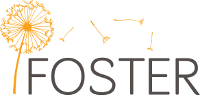What is Open Science?
The aim of this lesson on Open Science is to provide participants with an introduction to the concepts, practices and values lying behind the term 'Open Science'.
Learning objectives
This lesson will provide answers to the following questions:
- What is Open science? (main concepts, principles, key actors)
- What are the key benefits and challenges of open science
- What are the implications of reforming the way research is evaluated?
Introduction to Open Science
Definitions of Open Science
UNESCO
Many definitions of Open Science are available, but perhaps the most comprehensive is the one provided in the UNESCO Recommendation on Open Science (2021).
The graph below is taken from the UNESCO brochure on Open Science and represents the components of Open Science. As illustrated, Open Science encompasses all scientific disciplines and practices.

Schools of thought
Another attempt at defining the umbrella term Open Science comes from Benedikt Fecher and Sascha Friesike (2013) who propose five Open Science schools of thought.
- The Democratic School aims to make both the final results of research and research data available to everyone.
- The Pragmatic School endeavours to make research more efficient by opening up all phases of the scientific process and promoting collaboration, including through the use of online tools.
- The Infrastructure School focuses on openly available technological infrastructures needed to conduct science.
- The Public School aims to make research accessible, participatory, and understandable to everyone, including citizens.
- The Measurement School seeks alternative measures to evaluate research.
 Taken from 'Opening Science - The Evolving Guide on How the Internet is Changing Research, Collaboration and Scholarly Publishing'. Chapter Open Science: One Term Five Schools of Thought (2013)
Taken from 'Opening Science - The Evolving Guide on How the Internet is Changing Research, Collaboration and Scholarly Publishing'. Chapter Open Science: One Term Five Schools of Thought (2013)
FOSTER Taxonomy
The last representation provided here to explore the various facets of what Open Science entails is a taxonomy which was published in the European project FOSTER.
The taxonomy shows Open Science components as follows:
- Open Access: Open access to research publications, meaning making research results easily accessible and consultable.
- Open Data and FAIR Data: This category involves the sharing of open data and adherence to FAIR principles (Findable, Accessible, Interoperable, Reusable).
- Tools: This includes resources and technologies used to support researchers in the practice of Open Science.
- Policies: Institutional and national policies that promote and regulate the practice of Open Science.
- Infrastructures: This pillar pertains to the technical and organizational environment that facilitates sharing and collaboration in open research.
- Assessment: How to measure and evaluate adherence to Open Science principles.
Taken from FOSTER project.
